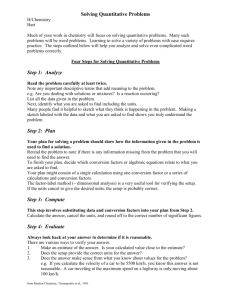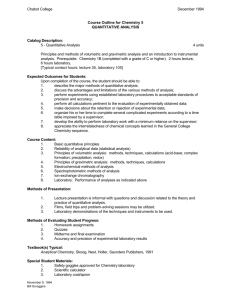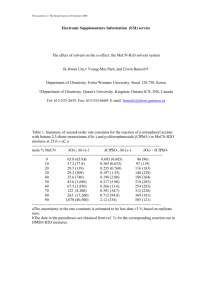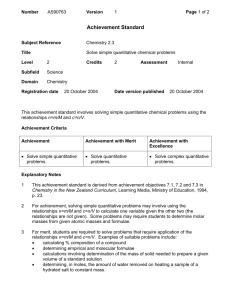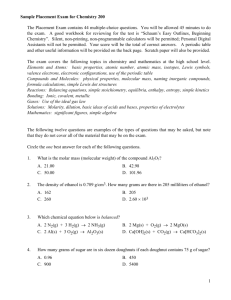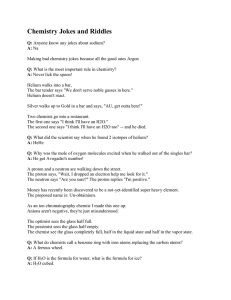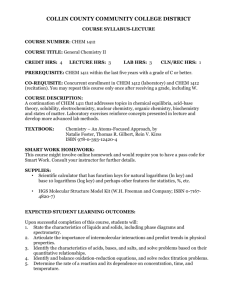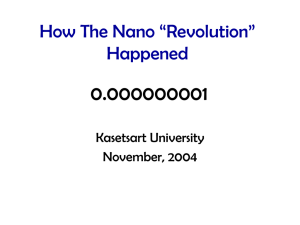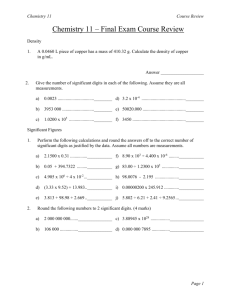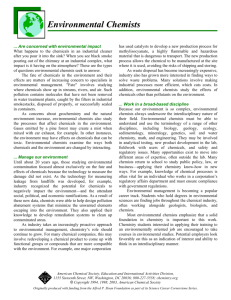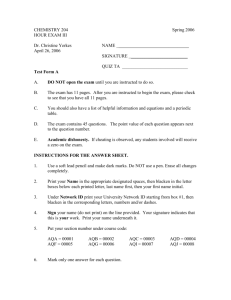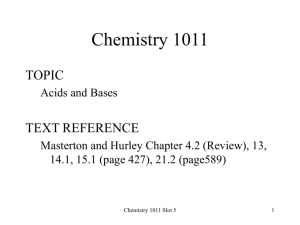What is Chemistry
advertisement
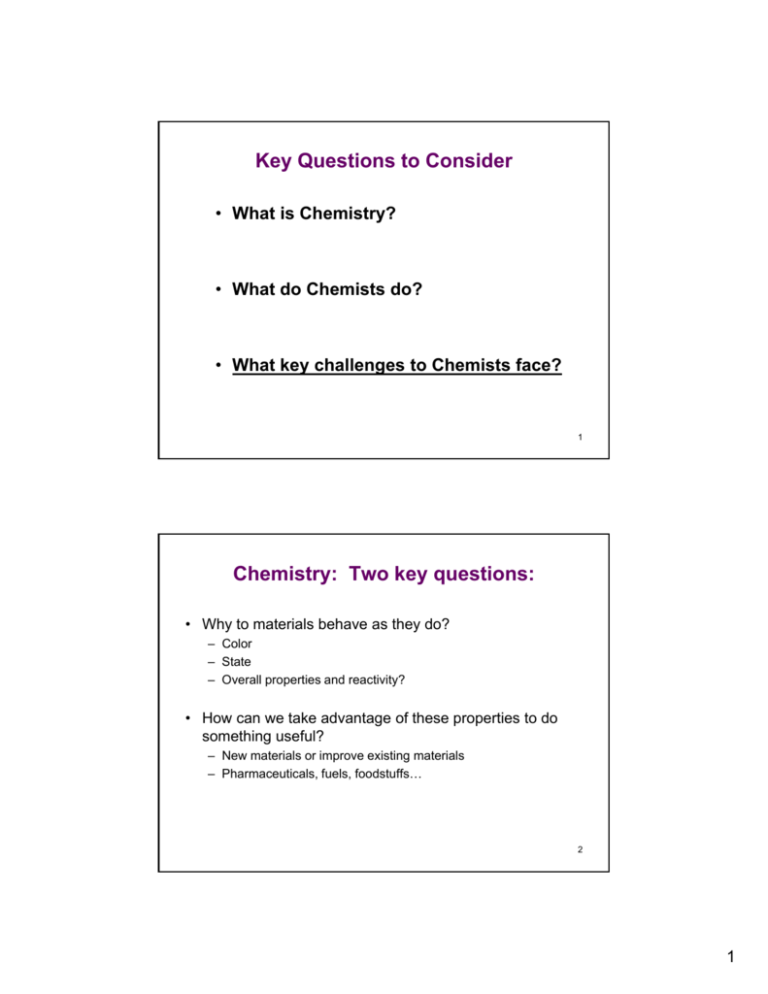
Key Questions to Consider • What is Chemistry? • What do Chemists do? • What key challenges to Chemists face? 1 Chemistry: Two key questions: • Why to materials behave as they do? – Color – State – Overall properties and reactivity? • How can we take advantage of these properties to do something useful? – New materials or improve existing materials – Pharmaceuticals, fuels, foodstuffs… 2 1 Major Subdivisons of Chemistry Blurry Lines • Analytical: • Biochemistry: • Inorganic: • Organic: • Physical: 3 Science is Experimental! • New knowledge/theories must be confirmed by experimental data. – If the theory and experiment (real world) don’t match, the theory must b modified! be difi d! • Route to experimental problem-solving: “Doing” Science The “Scientific Method”…really! Quotes from websites…so they must be true! “The scientific method is the p process by y which scientists,, collectively and over time, endeavor to construct an accurate (that is, reliable, consistent and non-arbitrary) representation of the world.” “The scientific method involves the following steps: doing research, identifying the problem, stating a hypothesis, conducting project experimentation, and reaching a conclusion.” 4 2 Discovery is often nonlinear Figure 1-1 from Petrucci, Harwood, Herring and Medura, 9th ed • http://undsci.berkeley.edu/article/scienceflowchart 5 Scientific laws and theories • Law: Repeatedly tested hypothesis that has not been contradicted – Concise statement of a relation that seems to always hold under same conditions – Once defined, static – What • Theory: y a unifying y gp principle p that explains p facts and laws – Theories are not hypotheses – Continuously revised as new data obtained – Why 6 3 Matter: from particulate to macroscopic Subatomic Particles: Protons, Neutrons, Electrons combine to form may exist as Atoms (Elements) combine in fixed ratios to form Pure substances Compounds can be Molecular Ionic can form Solids Liquids Gases can form Pure Material Homogeneous Mixtures Heterogeneous Mixtures 7 See Fig 1-4 Important terms/considerations for describing matter • Quantitative versus Qualitative descriptions – Qualitative – Quantitative • All quantitative measures have some uncertainty! • Precision and Accuracy • Chemical versus Physical changes – Chemical: – Physical: • How do we relate macroscopic to microscopic (nano (nano)? )? 8 4 Representations of matter Benzene, C6H6 H2O (g) H2O (s) H2O (l) 9 5
